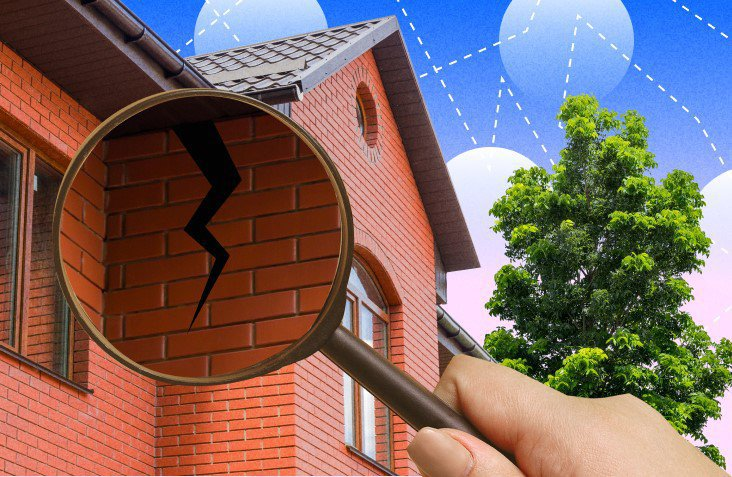Buying a home is one of the biggest investments you’ll ever make. That’s why it’s absolutely critical to thoroughly inspect a house yourself before purchasing, in addition to having a professional home inspection performed. There are many potential flaws and issues to uncover, and you don’t want to miss identifying any major red flags. Follow these comprehensive tips for what to systematically look for when examining both the inside and outside of the home.
Walk the Outside and Assess the Condition
Before even entering the home, dedicate adequate time to roam around and observe the exterior from all angles. You’ll want to look for the following potential warning signs of bigger underlying issues:
Check the Condition of Roofing, Gutters, Siding, Trim, and Paint
Carefully scan the entire roof for any damaged, cracked, loose or missing shingles, which can lead to serious leaks. Note any areas on the roof that sag or dip, which may indicate structural deficiencies underneath. Use binoculars for a close inspection if you have them.
Examine all exterior paint for cracking, bubbling, heavy fading, or peeling. Look for similar damage on siding materials and trim boards around windows, doors, rafters, and corner boards. Paint damage like this warns of excessive moisture issues underneath that need further investigation.
Check that all gutters are securely attached and clear of leaves, dirt, nests, and other debris that could clog them. Clogged gutters overflow and lead to water pouring down the exterior, causing major issues. Ensure downspouts properly divert water away from the home’s foundation as well.
Examine Windows, Doors, Foundation, Brickwork and Chimney
Methodically try opening and closing every door and window on the exterior. Ensure they open and close smoothly with no sticking. Check that door and window frames are entirely level and plumb within their openings, with no crookedness. This includes sliding doors and related tracks.
Examine all windowsills inside and out for signs of rot, gaps, cracking, or separations that allow outdoor air and moisture intrusion. Look closely at other penetrations like exterior outlets, pipes, and wires for similar separation or damage.
If possible, use a level tool to inspect the brickwork or stonework on chimneys and along the home’s foundation for any shifting, cracks in mortar, or uneven areas that indicate settling issues. Also note any missing bricks or debris buildup within a chimney flue.
Review Landscaping, Drainage, and Other Exterior Elements
Scan trees, shrubs, and landscaping elements surrounding the home. Overgrown sections up against siding can enable pest nesting and damage. Branches hanging over the roof also increase the chance of falls that crack shingles. Ensure plants don’t impede exterior lighting or access to meters and equipment.
Check that the slope and drainage of the entire property goes away from the home’s foundation at a suitable angle to prevent pooling against the structure. Make sure patios, driveways, and walkways also angle drainage away appropriately with no flat sections.
Inspect any other exterior structures as well like decks, porches, patios, balconies, fencing, play structures/swing sets, pools, sheds and garages for damage, leaks, safety hazards, or code violations. Make sure railings and banisters are sturdy. Examine any wood on these structures for rot and insect damage. Check concrete and brickwork for cracks threatening structural integrity.
Venture Inside and Carefully Analyze Every Room
Once satisfied inspecting the home’s exterior, go room-by-room on the interior, keeping an eye out for these common red flags:
Look for Signs of Water Damage on Walls and Ceilings
In each room, meticulously examine walls and ceilings for water stains or bulging areas indicating leaks. Feel areas on walls for dampness or spongy drywall and wallpaper. Take deep breaths in each room for musty smells suggesting mold or mildew could be lurking unseen behind walls or above ceiling.
Also consider when the home was last painted. A fresh coat of paint can intentionally hide larger flaws underneath so inspect these areas extra closely. Look for bubbles or cracks in the new paint that still hint at moisture issues beneath the surface.
Thoroughly Test Flooring for Level Surfaces and Damage
In each room, assess floors for level and stable surfaces. Feel for uneven or wobbly boards. Press down on tiles and boards to identify loose sections not properly secured underneath. Evaluate any cracking between pieces or gaps along seams where flooring materials meet.
Lift up area rugs, runners and doormats to see if they are hiding anything underneath. Examine floors under movable furniture as well. Peer under heating vents or radiators for missing floor pieces hidden by their placement.
Check for a white powdery residue around baseboards that could signal termites eating away wood underneath. Also look for cracks in concrete basement and garage floors.
Check Appliances/Fixtures for Function, Age and Wear
Systematically turn on all faucets, flush toilets, run showers, and switch on ceiling fans, lights, and outlets to gauge their proper operation. Fully test appliances like the furnace, hot water heater, dishwasher, refrigerator, washer and dryer as well.
Open and look inside all appliances. Note their age and model numbers. Check for heavy scratches, dents, rust, or exhausted seals. Make appliances run through entire cycles listening for concerning noises. Ensure no smoke or leaks appear.
Be meticulous in your inspection process in every single room. Make ample notes and take many photos to compare concerns later. Paying extremely close attention now will help avoid expensive surprises cropping up after purchasing a home.
